Montessori Lifestyle Made Easy: 13 Ways to Engage Your 6-12 Year Olds at Home
Discover how easy it is to embrace a Montessori lifestyle at home with your child.
If you’re ready to enhance your home learning experience, keep reading. The following suggestions are simple to incorporate into your daily routine and can make a big difference.
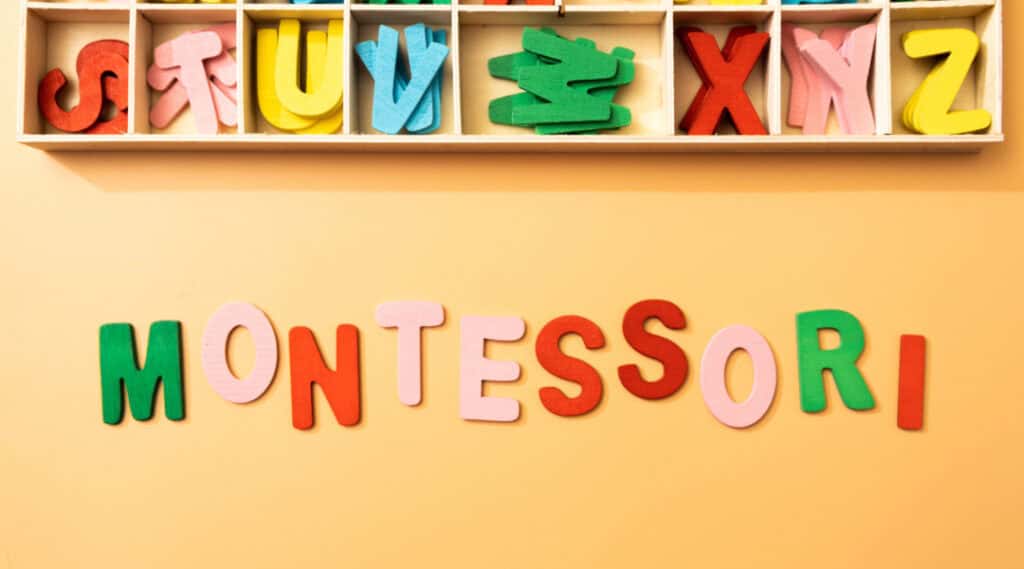
Before we explore how to live a Montessori lifestyle with kids in the second plane of development, let’s clarify what it truly means. Understanding the philosophy behind Montessori living will set the stage for a meaningful approach at home.
Living the Montessori Lifestyle with Elementary Kids
Living a Montessori lifestyle is rooted in a child-centered approach that nurtures independence, curiosity, and a love for learning. This philosophy extends beyond the classroom, empowering parents and caregivers to create an enriching environment for their children at home.
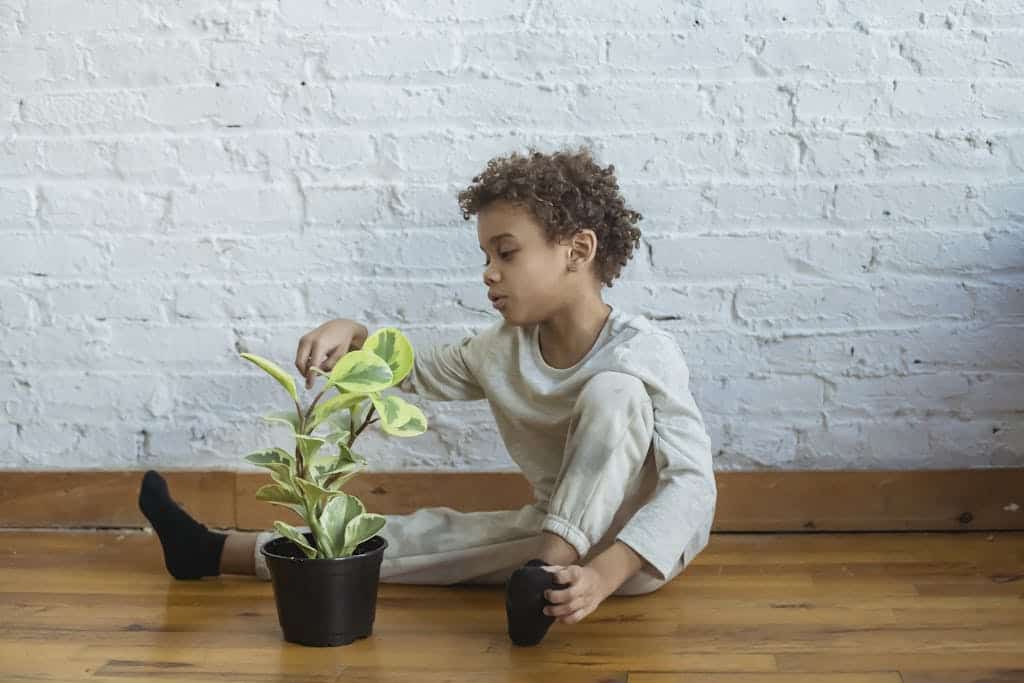
For elementary kids, the Montessori lifestyle is all about providing opportunities for self-directed exploration and discovery. It involves offering choices and encouraging children to take ownership of their learning journey. By integrating Montessori principles into daily routines, parents can cultivate a sense of responsibility, autonomy, and self-confidence in their children.
In a Montessori home, learning is joyful and organic. Every child is unique, and their interests matter. Children are allowed to pursue passions at their own pace. This approach encourages deep, meaningful connections with knowledge. It gives them the freedom to explore what sparks their curiosity.
13 Ways To Live a Montessori Lifestyle At Home
Create a Montessori-friendly home for your elementary-aged kids with these easy ideas. It’s the best way to get your child to learn, explore, and grow every day.

1. Have Kids Help with Household Chores
In a Montessori elementary classroom students learn to take great care of their environment. They have jobs, or classroom chores I guess you could say, that they are responsible for completing.
Why not continue this into the home?
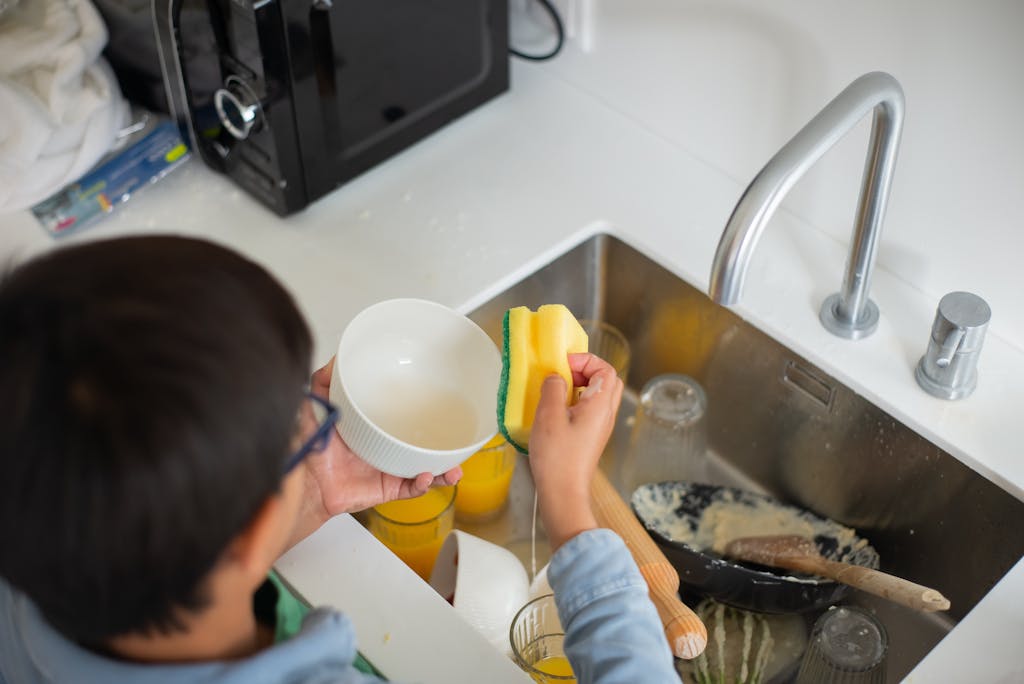
Let your child help with household chores like cooking, laundry, doing the dishes, or tidying up. This gives them a sense of responsibility for their home environment, and also helps them develop practical life skills.
And who knows? You might even get a few moments of peace and quiet while they’re occupied! Ok, so that’s not a guarantee, but wishful thinking!
2. Create Dedicated Spaces for Different Activities
Everything has it’s proper place in a Montessori classroom. The math materials are all in the math area, the language materials are together in the language area, you get the picture. This provides learners with a sense of order and familiarity.
Having dedicated areas for specific activities at home is a great way to bring some order and organization to any room. It might even result in fewer things being misplaced.
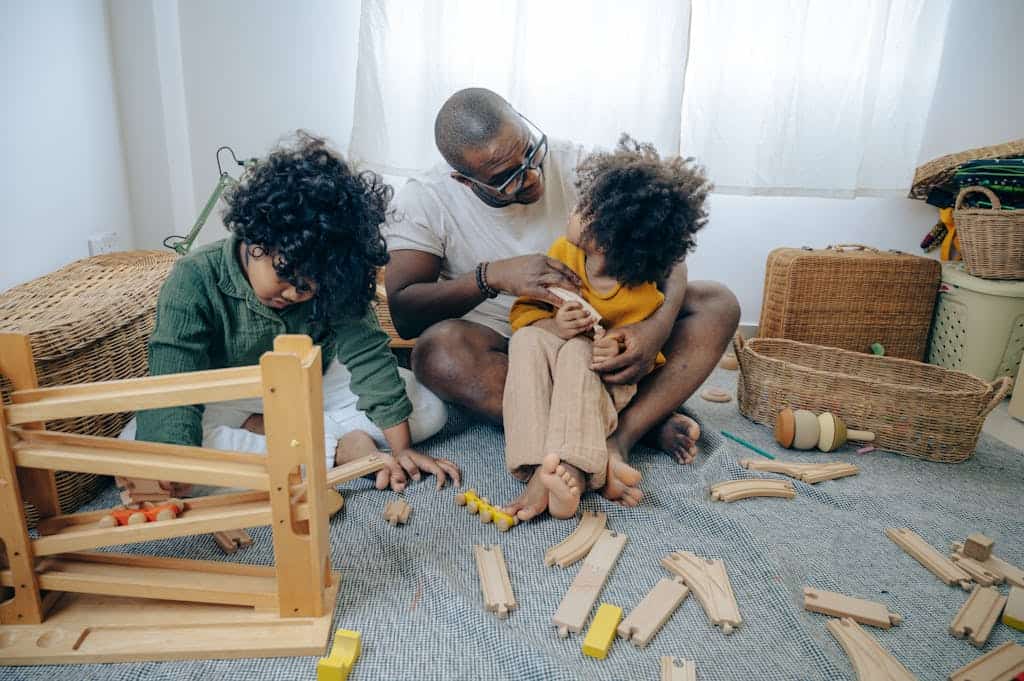
For example, designate an area of the house for creative play, another for quieter pursuits like reading or puzzles, one for doing research work, and equally as important an area where they can move their bodies freely and safely.
This will help your child know what is expected of them in each space and make clean-up time much easier.
3. Encourage Movement All Day Long
Encourage your child to move their body often throughout the day. In a Montessori elementary classroom, students are always on the move and usually in productive and purposeful ways.

Taking regular brain breaks in the classroom and at home helps children stay focused and engaged when it’s time to work on more challenging tasks.
Try setting a timer for 5 to 8 minutes and see how many different physical activities your child can do. Or better yet, try this fun movement game with dice with your kids. Laughter guaranteed!
4. Follow the Child
When it comes to learning new things, let your child take the lead. This is one of the most valuable takeaways from the Montessori philosophy!

For instance, if your child shows an interest in plants, why not start a mini garden together? Or, if they’re curious about different cultures, consider a visit to the local library or museum to explore. The opportunities for learning are endless!
Allowing your child to guide their own education nurtures a lifelong love of learning that will benefit them throughout their life.
5. R-E-S-P-E-C-T
Dr. Maria Montessori believed that respect was of utmost importance. In the classroom, teachers demonstrate respect through their actions, serving as role models for their students.
And you can do the same at home.

Model respectful behaviour towards yourself, others, and the environment. Your child is watching you all the time. Make sure they see you behaving in ways that you would like them to emulate.
This includes speaking kindly to yourself and others, being mindful of your impact on the environment, and treating all creatures with compassion.
6. Provide Opportunities for Sensory Play
You might think that sensory play is just for the toddler and primary levels. But that’s not the case at all.

Sensory play is a type of learning that focuses on activities that engage the five senses. And this type of activity doesn’t just end at the primary level. In a Montessori elementary classroom, students are still actively taking on information through their senses.
Children learn best when they’re able to actually do something, not just listen to a presentation. So whenever possible, promote hands-on learning in your home.
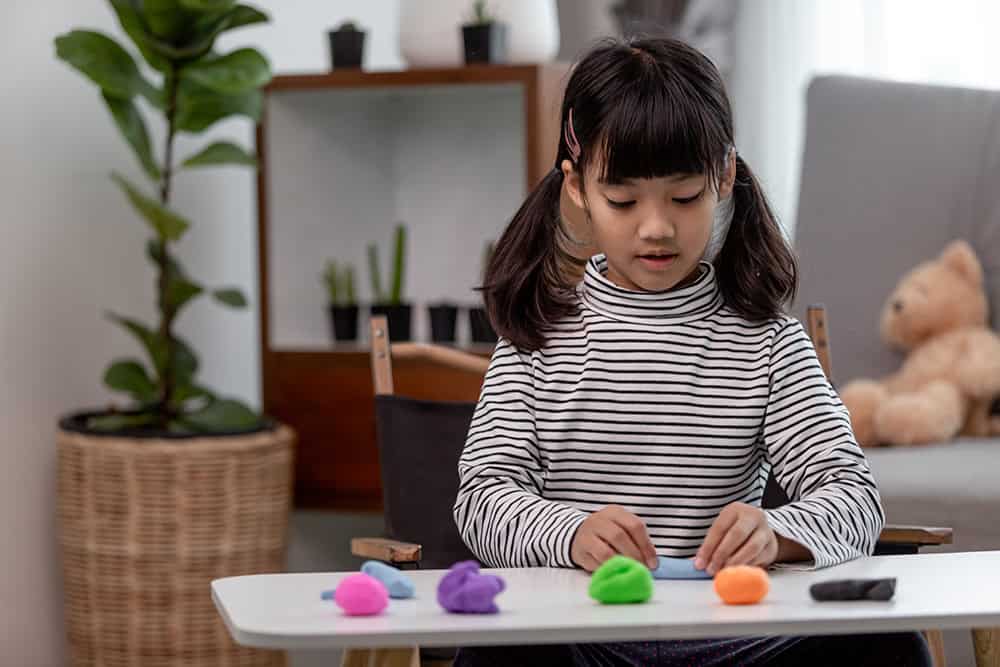
This can be as simple as letting them help you bake cookies, getting them to try musical instruments, encouraging them to explore different textures when shopping for clothing, or having them taste-test for family meals. Let them explore with those senses!
Activities that stimulate the senses support brain growth and learning in an engaging and interactive way. So entertain your kids with sensory play at home, and know that you’re contributing to their development.
7. Develop Independence with Choices
Encourage independence by offering your child choices whenever possible. I always gave my upper elementary students the freedom to choose, whether it was picking which math word problems to solve or deciding when to have their morning snack. By the end of grade 6, they were making decisions with confidence, helping them develop a strong sense of self.

If you want to provide children with choices at home, ask them to choose their outfit for the day or give them some food choices they can have for snack. You can even have them decide on their bedtime by giving them three options.
Allowing them to make small decisions will help them feel confident and capable when faced with bigger choices in the future.
8. Build Organization Skills
Help your child develop a sense of order by teaching them basic principles of organization such as grouping similar items together or putting things away in their proper place after using them.

A well-organized environment will not only save you time and frustration down the road, but it will also help your child focus on other tasks more easily because they won’t be constantly looking for things that are out of place.
9. Take Advantage of Teachable Moments
Every day living is a vast classroom, and teachable moments are all around us. Embrace these opportunities to expand your child’s horizons beyond the traditional classroom. From grocery shopping to cooking a meal together, each moment presents a chance to ignite their curiosity and deepen their understanding of the world.

Engage in meaningful conversations about the things they observe and encourage them to ask questions. Whether it’s discussing different fruits and vegetables at the market or pointing out the measurements in a recipe, these simple interactions can spark a lifelong love of learning.
Remember, learning doesn’t need to be confined to textbooks and structured lessons. It can be a delightful journey of discovery that happens naturally as you explore the world together. So, seize these everyday opportunities and watch your child’s knowledge and wonder grow with each teachable moment!
10. Be Positive, Patient, and Calm
As children navigate the second stage of learning and growth, it’s essential to be a steady and reassuring presence in their lives. Be a patient and calm guide who supports moments of exploration.
But also, demonstrate how to handle challenges gracefully, allowing them to observe and learn from your responses. Emphasize the importance of perseverance and resilience, showing them that setbacks are part of the journey toward success.

Moreover, listen attentively to their thoughts, feelings, and concerns, acknowledging their experiences without judgment. This fosters a sense of trust and emotional security, which in turn empowers them to explore and learn with confidence.
Remember, every child is unique, and all paths in life are filled with ups and downs. By being positive, patient, and calm, you create an environment where they feel safe to embrace their individuality and discover the the world around them at their own pace.
11. Value Effort Over Perfectionism
In the Montessori lifestyle, effort is valued more than perfectionism. We encourage children to focus on the process of learning, celebrating their willingness to try new things and put in their best effort, regardless of the results.
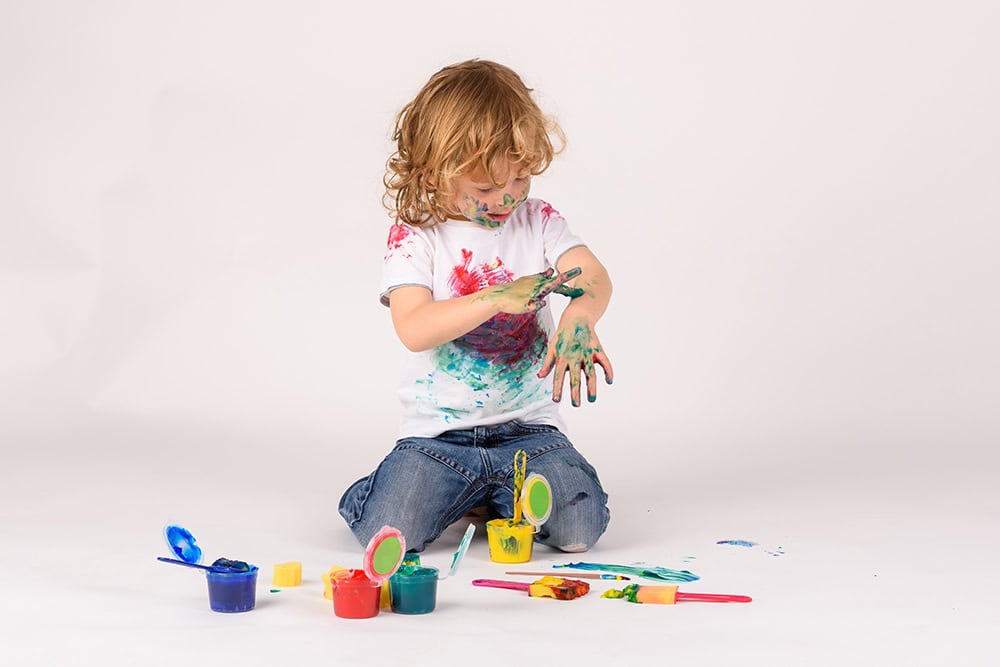
When we shift the focus away from perfection and toward progress, children develop a growth mindset. They begin to understand that making mistakes is a natural and valuable part of learning – each misstep helps them grow, discover, and improve over time.
As parents and educators, we play a pivotal role in nurturing this mindset. Encourage open discussions about mistakes, highlighting their role as valuable learning experiences. And go ahead and praise your child’s hard work and dedication, but just be sure to recognize their progress and effort.

Through valuing effort over perfectionism, we instill in our children the belief that they are capable, competent learners capable of navigating life’s challenges with confidence and determination. This approach fosters a lifelong love for learning and encourages them to take pride in their unique journey of growth and self-discovery.
12. Be Flexible with Rules and Expectations
While structure and guidelines are essential for creating a nurturing environment, it’s equally important to adapt and adjust when necessary.
Children are always growing and changing, so what worked for them last month might not work today. It’s important to stay in tune with their development and emotions, adapting to the changes they go through.
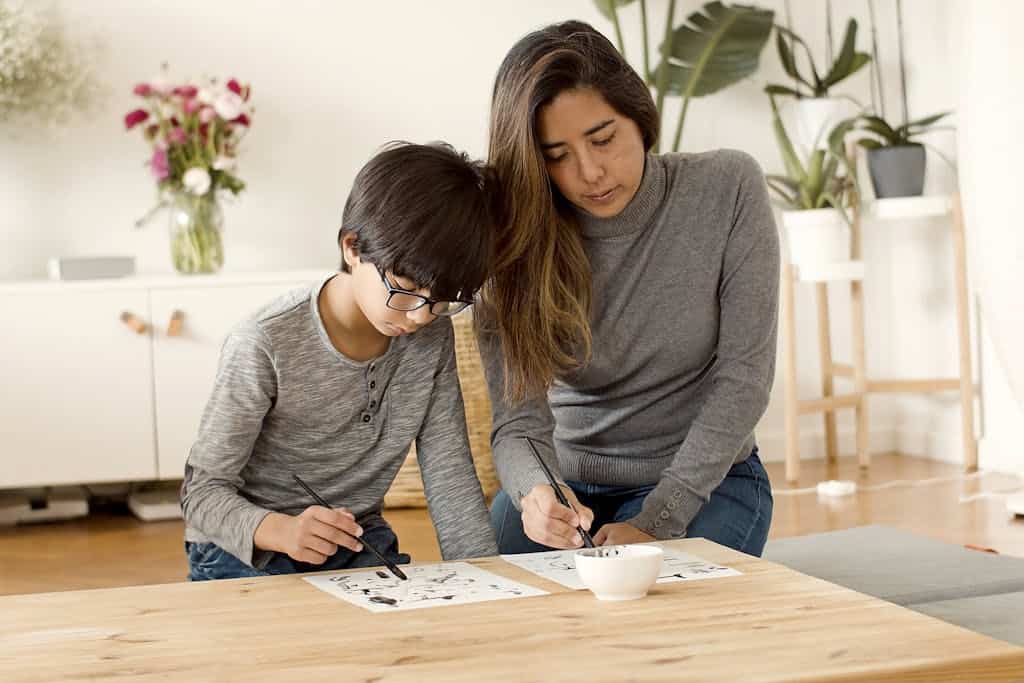
By being open to flexibility, we demonstrate a deep understanding and respect for our children’s individuality. We acknowledge that they have different learning styles, strengths, and challenges, and we respond to these with sensitivity and compassion.
When a rule or expectation isn’t working, it’s not a sign of failure or weakness but an opportunity for growth. It shows that we are responsive and committed to creating an environment that supports our children’s well-being and development.

In the Montessori approach, we emphasize the importance of observation and reflection. By paying close attention to our children’s behavior and reactions, we can identify when a rule or expectation needs to be reevaluated.
Guide children to value effort over perfection. By focusing on the process of learning and growth, we help them appreciate trying new things and putting in their best effort, no matter the outcome.
13. Encourage Positive Social Interactions
One of the core principles of the Montessori lifestyle is fostering a sense of community and respect among children. At the heart of this philosophy is the idea that positive social interactions are essential for personal and academic growth.
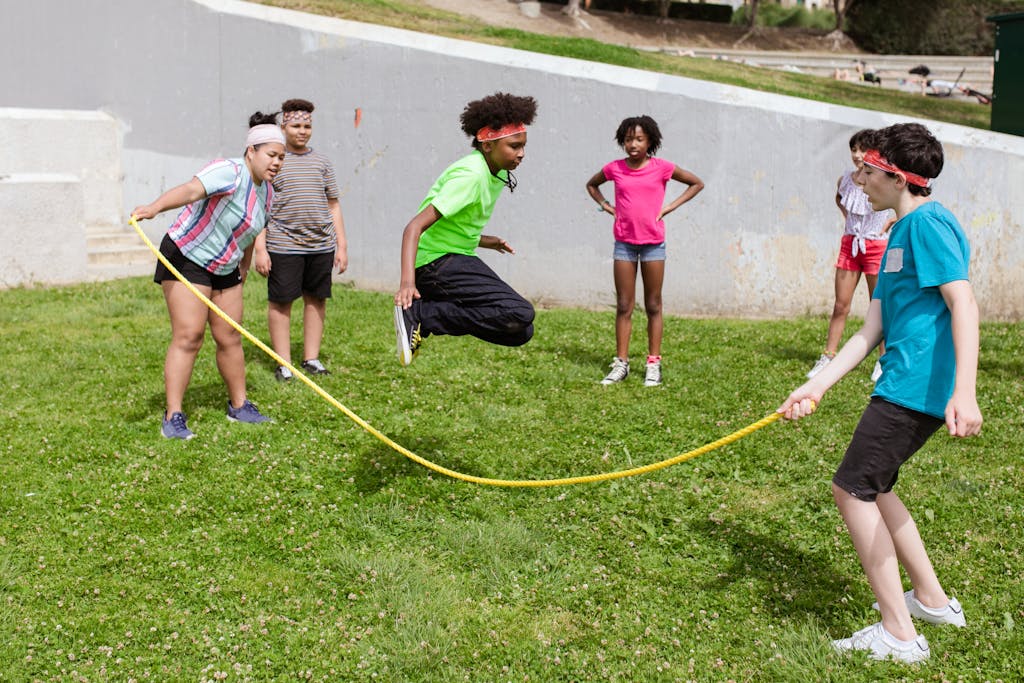
Create opportunities for your child to engage in cooperative activities with peers or siblings. Try group projects, shared responsibilities, or even a family book club. These practices teach the value of teamwork and mutual respect.
Encourage your child to help others, share their knowledge, and listen actively during conversations. These interactions teach children how to navigate social situations with kindness and understanding. They are essential for developing compassion and responsibility.

Emphasizing positive social interactions at home supports your child’s social development. It also helps them thrive in any community they join. This approach fits perfectly with the Montessori lifestyle, focusing on nurturing well-rounded individuals who contribute positively to the world.
The Benefits of a Montessori Lifestyle
The Montessori method is more than just an educational approach; it’s a way of life that helps children grow in mind, body, and spirit. Here are the benefits of a Montessori lifestyle and its positive impact on an elementary child’s learning journey.

Independence and Self-Reliance
In the Montessori approach, children are encouraged to take charge of their own learning journey. By empowering them to make choices and complete tasks independently, they build self-reliance and a sense of accomplishment. At home, this means giving them age-appropriate responsibilities and allowing them to participate in daily activities such as cooking, setting the table, or organizing their space.
Unleash Creativity
Fostering creativity is at the heart of Montessori education. With a Montessori lifestyle, you’ll encourage your child to express their ideas freely and engage in imaginative play. Providing open-ended materials and opportunities for creative exploration at home, such as art supplies, building blocks, or nature-inspired crafts, will ignite their creativity and cultivate a passion for self-expression.
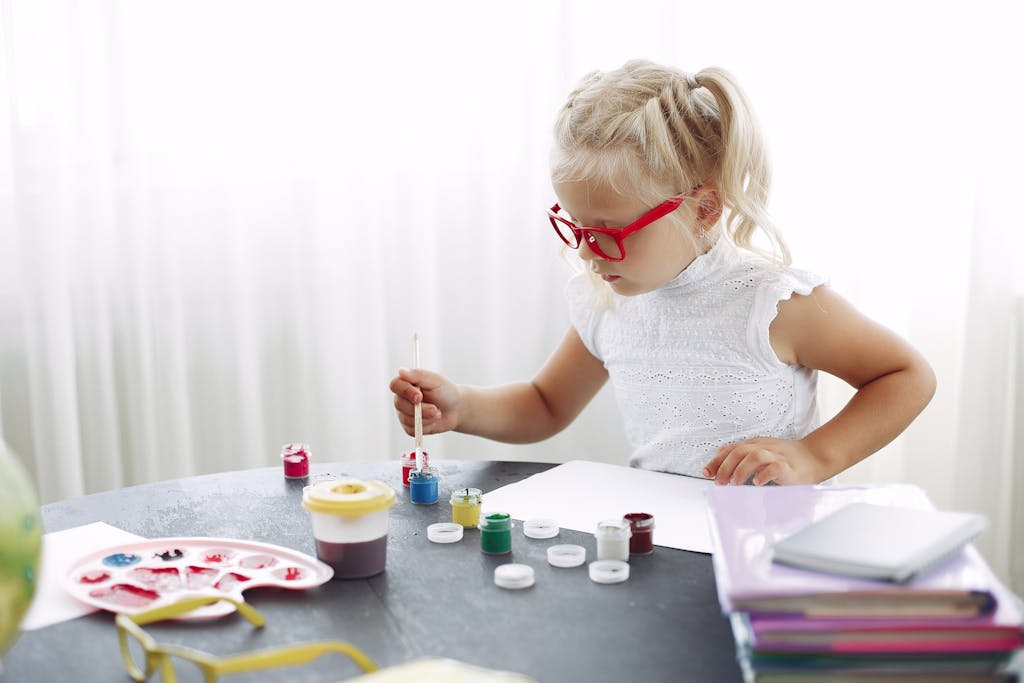
Ignite the Love of Learning
Montessori classrooms are designed to nurture a love of learning. The same can be achieved at home by creating an environment that sparks curiosity and fosters a natural desire to explore new topics. Offer a wide range of age-appropriate books, puzzles, and educational games to ignite your child’s thirst for knowledge. Encourage hands-on exploration of subjects they find interesting, and watch as their love for learning flourishes.
Build Confidence and Emotional Well-Being
The Montessori approach places great importance on emotional well-being. By respecting your child’s interests and emotions, and providing a nurturing and supportive environment at home, you’ll help them develop a positive self-image and emotional intelligence. This will lead to improved self-esteem and a stronger sense of belonging in the world around them.

Bringing a Montessori lifestyle into your home can be an exciting journey for both you and your child. Watch as their independence grows, creativity thrives, and love for learning deepens. By nurturing curiosity and confidence, you’re setting the stage for a lifetime of exploration and growth.
The Wrap-Up: Montessori Lifestyle at Home
Explore the Montessori lifestyle at home and watch your child’s growth unfold. With these simple and (almost) foolproof tips, you’ll see the powerful impact this approach can have on a child’s development.
Montessori is not just about education; it’s about nurturing your child’s curiosity, creativity, and love for learning. When you foster independence, give them the freedom to express themselves, and create a supportive environment, you empower them to grow academically and emotionally.
Happy Montessori living!
📌 Pin this to Pinterest so you can find it easily!

Keep your kids busy learning with the activities in these blogs:
11 Ways to Use Our Roll A Story Dice Game
57 Epic Montessori-Aligned Spring Break Activities for Your Kids
13 Engaging Vocabulary Development Activities for Elementary Kids
Rebus Puzzles for Kids: A Comprehensive Riddle-Solving Guide
9 Unique Rebus Puzzles with Answers for Kids
31 Fun Summer Reading Activities Elementary Students Will Love
The Best Neighborhood Walk Scavenger Hunt
8 Easy Rebus Puzzles with Answers
Score Big with These 9 Super Bowl Classroom Activities
27 Educational YouTube Channels to Prevent Summer Learning Loss


